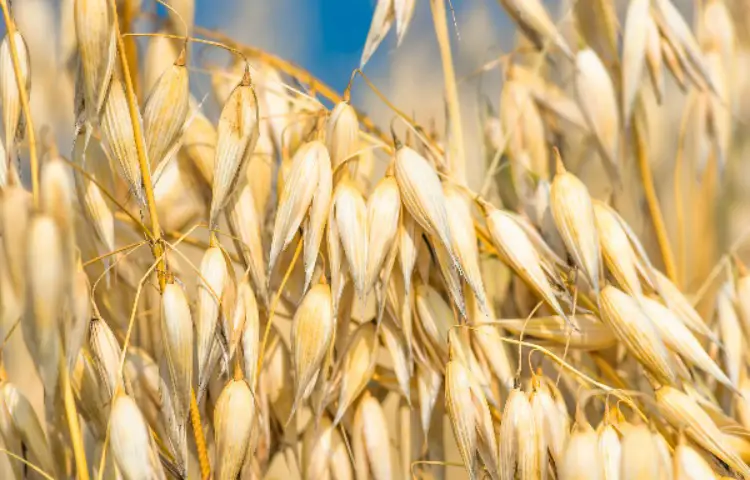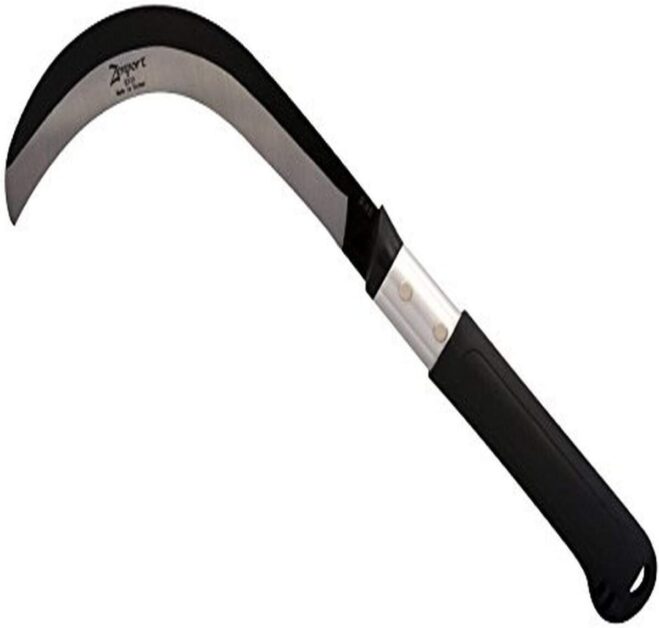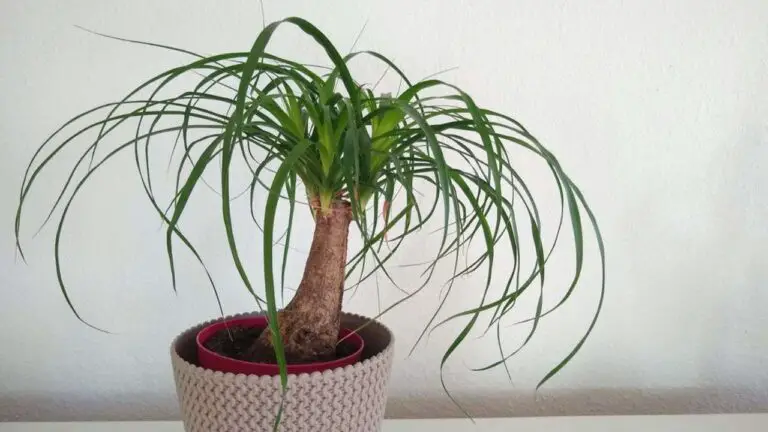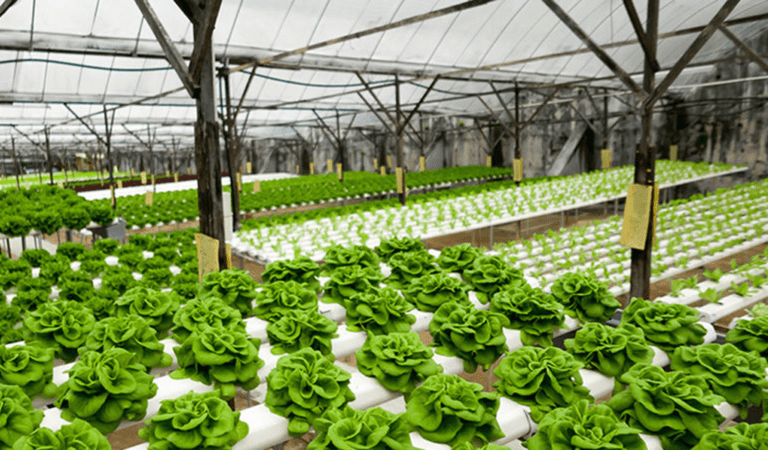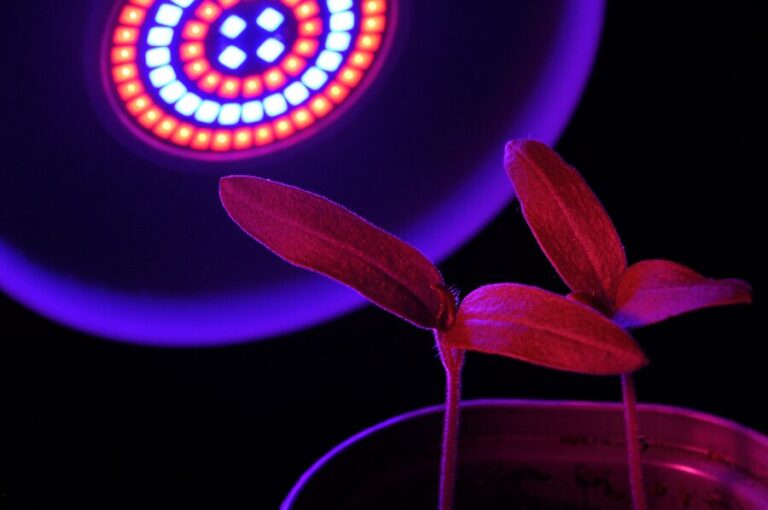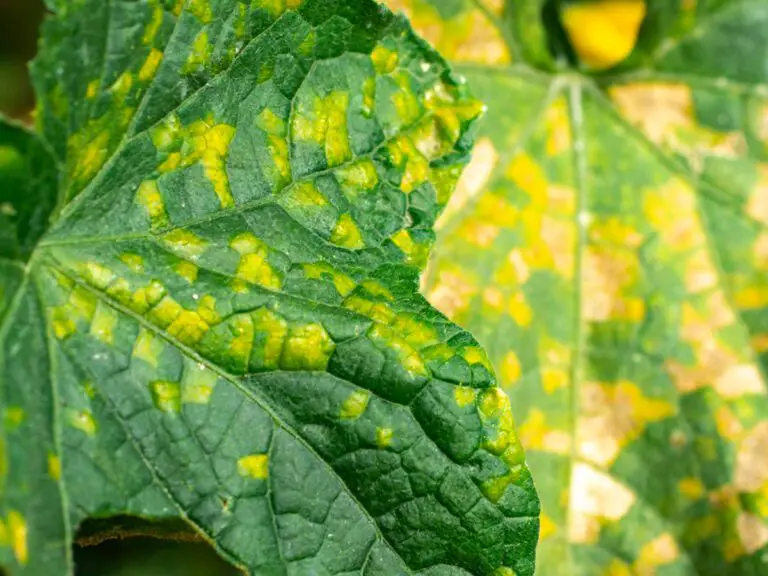Growing Oats: Whole-Grain Goodness
Are you ready to dive into the world of growing oats and embrace the wholesome goodness of whole grains? Picture this: your own backyard transformed into a golden field of nutritious oats swaying in the breeze. From breakfast bowls to baking delights, oats are a versatile staple that can elevate your culinary creations and nourish your body.
Join us on a journey to discover the joys of growing oats, from planting the seeds to harvesting the grains. With our expert guidance and practical tips, you’ll soon be reaping the rewards of your oat-growing adventure. Let’s sow the seeds of whole-grain goodness together and watch your garden flourish with healthful abundance!
Table of Contents
Understanding Oat Varieties and Cultivation
Oats are a versatile and nutritious crop that has been cultivated for centuries. Understanding the different varieties of oats and the process of cultivation is crucial for successful oat farming. There are several oat varieties available, each with its own unique characteristics and adaptation to specific growing conditions.
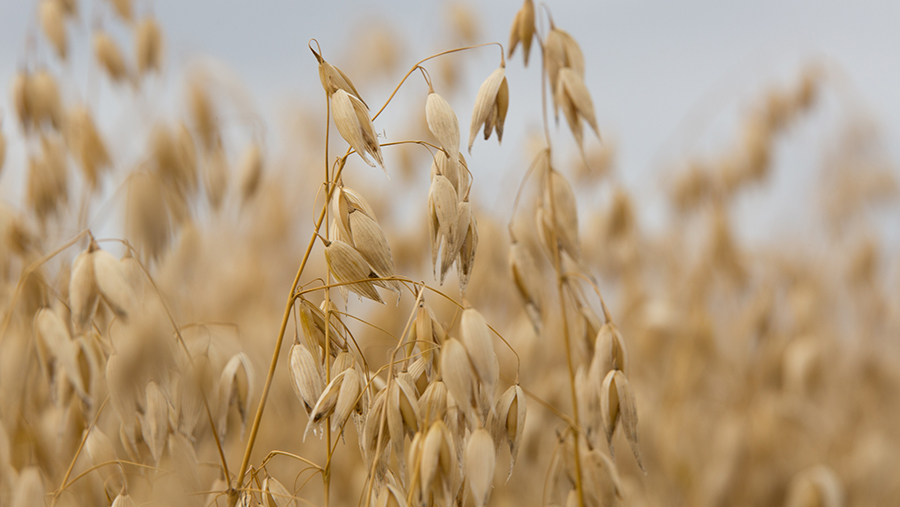
- Common Oats (Avena sativa):
- Widely Grown: Adapted to various climates.
- Growth Period: Takes 100-120 days from planting to harvest.
- Spring vs. Winter Oats: Categorized based on planting time and growth habit.
- Naked Oats (Avena nuda):
- Husk Feature: Easily removed during threshing.
- Valued Traits:
- High protein content.
- Dietary fiber.
- Resistance to lodging (bending or breaking due to wind or rain).
- Cultivation Factors:
- Climate: Oats thrive in cool temperatures (55°F to 77°F or 13°C to 25°C).
- Soil: Well-drained soil with organic matter.
- Moisture: Relatively drought-tolerant but needs adequate moisture during critical growth stages.
Stay tuned for the fascinating history of oats and their impact on agriculture! 🌾🌱
The History of Oats and Their Importance in Agriculture
Oats have a long and fascinating history that dates back thousands of years.

- Importance in Agriculture:
- Oats are a versatile crop known for their nutritional benefits, containing essential nutrients like fiber, protein, and antioxidants.
- Oats have proven to be environmentally friendly by improving soil quality and reducing the need for chemical fertilizers.
- Resilient and able to withstand challenging growing conditions, oats have become significant in global agriculture.
- Oats are primarily grown in regions like Iowa, Wisconsin, Minnesota, Scotland, Poland, and Russia.
- The historical context of oats highlights their enduring importance as a vital crop with diverse agricultural benefits.
Exploring Different Types of Whole-Grain Oat Products
Whole-grain oat products have gained popularity in recent years due to their numerous health benefits and versatility in the kitchen.
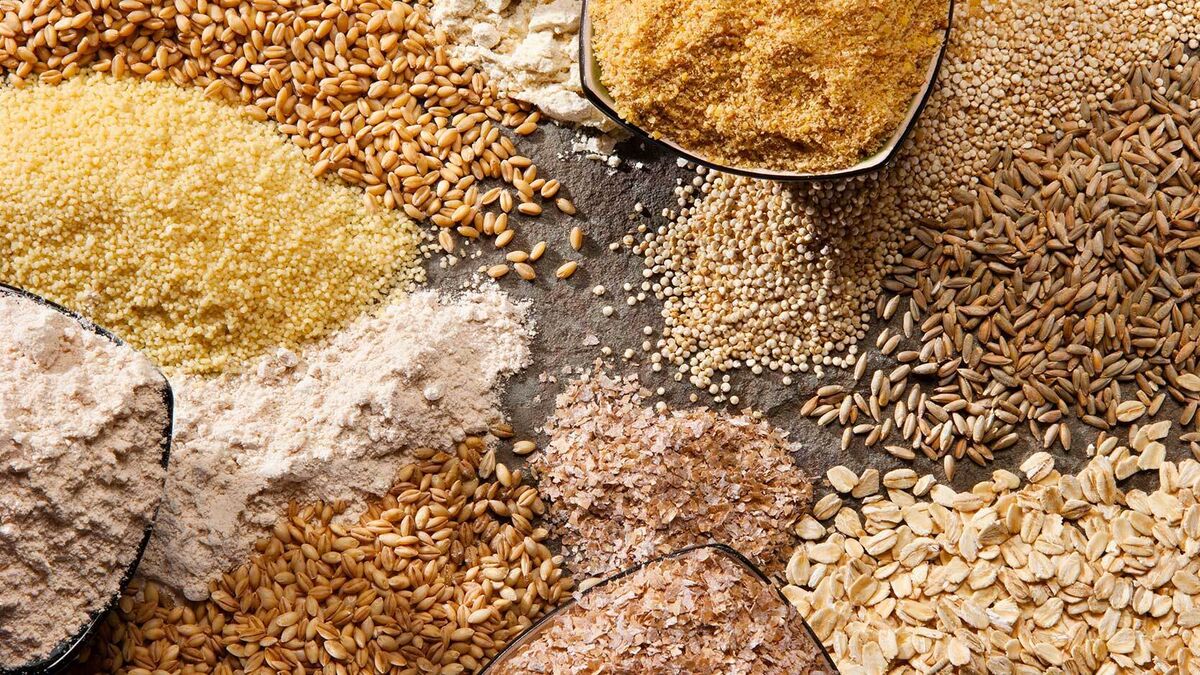
- Nutrient-Rich: Oats are packed with fiber, protein, and essential nutrients, making them a valuable addition to a balanced diet.
- Variety of Options: Different types of whole-grain oat products cater to various taste preferences and dietary needs.
- Gluten-Free Alternatives: Specifically labeled gluten-free oat products are available for those with gluten sensitivities or celiac disease.
- Rigorous Testing: Gluten-free oats undergo thorough testing and are produced in dedicated facilities to prevent contamination with gluten-containing grains.
- Versatile Usage: Gluten-free oats can be used interchangeably with traditional oats in cooking and baking, providing a safe option for gluten-sensitive individuals.
The following table explains different types of whole-grain oat products, along with their advantages, disadvantages, and characteristics:
| Oat Product | Advantages | Disadvantages | Characteristics |
|---|---|---|---|
| Whole Oat Groats | – Highest nutritional value | – Longest cooking time | – Unprocessed, with inedible hulls removed |
| Steel Cut Oats | – Faster cooking than groats | – Still takes time to cook | – Cut into smaller pieces with a steel blade |
| Scottish Oatmeal | – Creamier texture than steel-cut | – Stone-ground, not steel-cut | – Broken bits of varying sizes |
| Rolled Oats (Old Fashioned) | – Stabilized healthy oils | – Less texture than steel-cut | – Steamed and rolled into flakes |
| Quick or Instant Oats | – Quickest cooking time | – Texture changes | – Rolled thinner and/or steamed longer |
| Oat Flour | – Used in baking and thickening | – Not considered whole grain | – Ground whole oats |
Remember that each type of oat product has its unique qualities, so choose the one that best suits your taste and cooking preferences! 🌾🥣
In the next section, we will delve into the process of selecting the best oats for optimal nutrition, exploring important factors such as oat varieties and cultivation methods. Understanding these aspects will help you make informed choices when purchasing whole-grain oat products and ensure you reap the maximum health benefits from this versatile grain.
How to Select the Best Oats for Optimal Nutrition
Selecting the best oats for optimal nutrition is essential to ensure you’re getting the maximum health benefits from this versatile whole grain. When choosing oats, it’s important to consider factors such as the variety, processing method, and nutrient content.

- Types of Oats:
- Steel-Cut Oats: These are the least processed and have a coarser texture.
- Rolled Oats: Steamed and flattened with large rollers.
- Quick Oats: Chopped into smaller pieces.
- Instant Oats: Pre-cooked and dehydrated.
- Nutritional Value:
- Steel-Cut and Rolled Oats: Retain more natural fiber and micronutrients.
- Quick and Instant Oats: Less nutritious due to further processing.
- Processing Methods:
- Minimally Processed: Opt for steam-rolling or kiln-drying methods.
- Avoid Heat-Processed Oats: Heat can degrade nutrients.
- Organic Oats: Produced without synthetic pesticides or fertilizers.
Remember, choosing less processed oats and mindful processing methods can enhance their nutritional benefits! 🌾🥣
The Process of Sowing Oat Seeds and Promoting Growth
Sowing oat seeds and promoting their growth is a crucial step in establishing a successful oat crop. Before sowing, it is important to choose the right oat variety that is suitable for your specific climate and growing conditions.
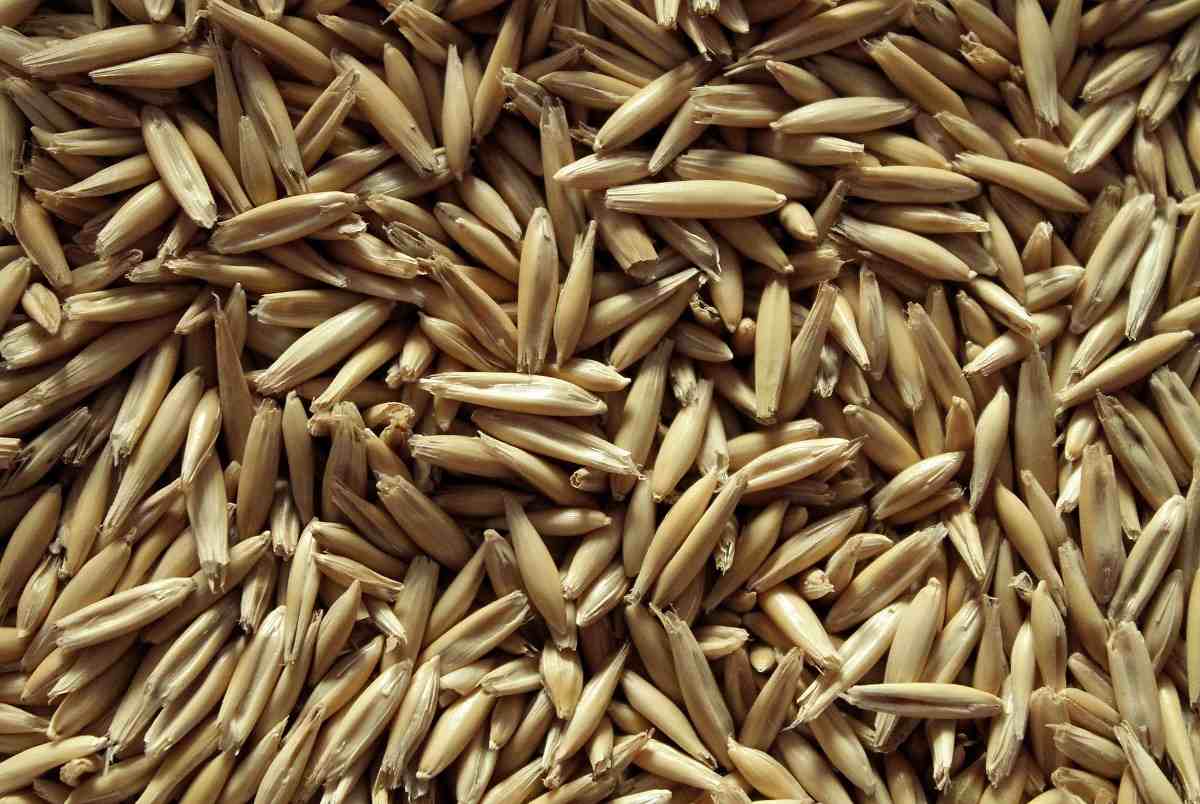
Consider your climate and growing conditions.
Popular oat varieties include:
Common Oats: Versatile and widely grown.
Spring Oats: Sown in spring for summer harvest.
Winter Oats: Planted in fall for early spring harvest.
Oats thrive in well-drained soils with a pH between 6 and 7.
Ensure the soil is well-tilled, removing weeds and rocks.
Good soil preparation enhances germination.
Plant oat seeds at a depth of approximately 1 to 2 inches.
Maintain row spacing of about 6 inches.
Proper spacing allows for air circulation and reduces disease risk.
Sow oat seeds evenly across the field.
Uniform distribution promotes consistent growth.
Minimize competition between plants.
Oats are commonly sown in early spring or late summer.
Consult local experts for precise sowing dates based on your region.
Remember these factors to establish a successful oat crop! 🌱🌾
Essential Factors for Successfully Growing Oats
When it comes to successfully growing oats, there are several essential factors to consider. First and foremost, selecting the right oat variety is crucial. Different varieties have different characteristics and thrive in different growing conditions. It’s important to choose a variety that is well-suited for your climate, soil type, and available resources.
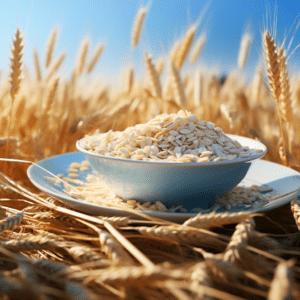
To successfully grow oats, consider the following essential factors:
Soil Requirements:
- Oats prefer well-drained soil with pH levels between 6.0 and 7.0.
- Some cultivars can tolerate pH levels around 4.5.
- Oats have a deep and branched root system, making them less demanding in terms of soil fertility.
Planting and Seeding:
- Planting depth should not exceed coleoptile length (30-60 millimeters for most varieties).
- Prepare a good seed bed for successful production of naked oats.
- Match variety to sowing time, with long season varieties sown first (late April to mid-May) and short season varieties later (June).
Water Requirements:
- Oats are water-loving plants that thrive with ample watering and high relative humidity.
- Regular precipitation during the summer is crucial for high oat yields.
- Irrigation may be necessary during dry spells to maintain soil moisture levels.
Nutrients:
- Key nutrients needed for oat growth are nitrogen (N), phosphorus (P), and potassium (K).
- Applying phosphorus can help improve oat growth.
Weed and Insect Control:
- Regularly inspect crops for pests such as redlegged earth mite, lucerne flea, aphids, and armyworms.
- Control weeds in a timely manner with respect to both weed size and crop development.
- Rotate herbicides to prevent inducing resistance.
Disease Management:
- Monitor crops for diseases such as stem rust, leaf rust, crown rust, powdery mildew, loose smut, barley yellow dwarf virus (BYDV), and Septoria avenae blotch.
- Take prompt action to address potential threats.
Harvesting:
- Harvest varieties that are likely to shed or lodge first to prevent significant lodging and shedding due to crop movement in the wind.
- Adjust harvest settings for hull-less oat varieties to minimize harvest damage.
Rotation:
- Rotate crops to prevent oats from growing after oats and other grains.
By considering these factors and implementing appropriate management practices, you can successfully grow oats and achieve high yields.
Nurturing Oat Crops: Soil, Water, and Sunlight Requirements
Oats, like any other crop, require specific conditions in order to thrive and produce a healthy yield.
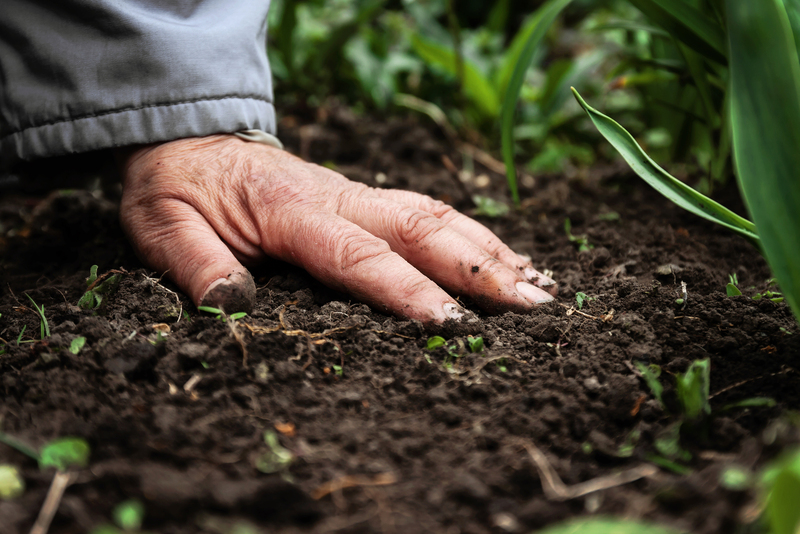
Well-drained soil with a pH between 6.0 and 7.0.
Oats tolerate various soil types.
Adequate watering is crucial.
High relative humidity and regular precipitation promote high yields.
Oats have a deep root system.
Efficiently absorb nutrients from the soil.
Treat oat seeds before sowing for better germination.
Seeding rate: 20-25 g of seeds per square meter.
Adjust planting depth based on soil type.
Apply organic and mineral fertilizers (nitrogen, phosphorus, potassium).
Oats are less demanding in terms of fertility.
Oats tolerate finer soil textures.
Fibrous root system extends deeply for nutrient absorption.
Oats can be seeded into bermuda grass sod.
Suitable for mixtures with triticale or legumes for improved yields and quality.
Remember these points for successful oat cultivation! 🌾🌱
Effective Pest and Disease Management for Oat Plants
Pest and disease management is crucial for cultivating healthy and thriving oat plants. Various pests and diseases can significantly impact the growth and yield of oat crops if left unchecked. Effective management strategies involve a combination of preventative measures, monitoring, and timely interventions.

Variety selection plays a significant role in protecting oat crops from diseases, while agronomy is essential for weed management.
Accurate crop staging is vital to ensure the optimal performance of crop protection products like herbicides, insecticides, and fungicides.
Stem rust and crown rust are major diseases affecting oat crops, with stem rust resistance generally more stable than crown rust resistance.
Barley yellow dwarf virus can cause significant yield loss in western Canada and is transmitted by grain aphids.
Seed treatments can control diseases like loose smut, and fungicides are available for managing fungal leaf spots.
These pests can cause damage to oat crops and need to be managed effectively to prevent yield losses.
Implementing a comprehensive pest and disease management strategy that includes monitoring for pests and diseases, selecting resistant varieties, practicing good agronomic techniques, and using appropriate control measures like fungicides and insecticides can help protect oat crops and ensure a successful harvest.
The Importance of Proper Weed Control in Oat Farming
Proper weed control is crucial for successful oat farming. Let’s break down the essential factors:
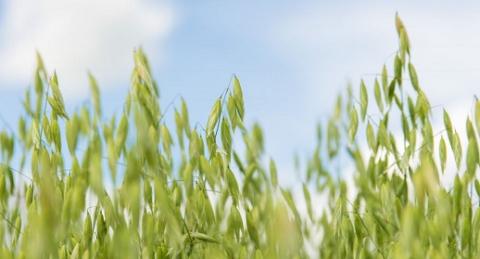
- Weed Competition:
- Weeds compete with oat plants for sunlight, water, and nutrients.
- Hinders oat growth and reduces yield and quality.
- Integrated Weed Management:
- Cultural Methods:
- Crop Rotation: Disrupts weed life cycle.
- Field Sanitation: Reduces weed seed bank.
- Mechanical Methods:
- Hand Weeding, Hoeing, or Mowing for smaller fields.
- Herbicides for larger fields.
- Cultural Methods:
- Herbicide Selection:
- Choose herbicides targeting specific weed species.
- Minimize harm to oat crops.
- Application Techniques:
- Consider timing and dosage for effective control.
- Rotate herbicides to prevent resistance.
- Benefits:
- Healthier oat plants.
- Higher yields.
- Sustainability and high-quality oat production.
Remember these practices for successful oat cultivation! 🌾🌱
For farmers looking to maintain healthy crops like oats, Roundup Weed & Grass Killer₄ with Comfort Wand is an excellent choice. This product is specifically designed to target tough weeds and grasses that can compete with crops for nutrients and space. With its effective formula, Roundup Weed & Grass Killer₄ can eradicate common nuisances such as dandelion, crabgrass, poison ivy, clover, spotted spurge, and other broadleaf weeds, ensuring that your oats have ample room to thrive.
One of the key benefits of using Roundup Weed & Grass Killer₄ is its rapid action. It is rainproof in as fast as 30 minutes, providing quick results that farmers can rely on. This fast-acting nature is essential for protecting crops from weed competition, allowing oats to grow without interference.
Additionally, Roundup Weed & Grass Killer₄ is easy to use, thanks to its Comfort Wand with one-touch continuous spray. This feature not only streamlines the application process but also provides convenience for farmers who need to cover large areas efficiently.
When applied correctly, Roundup Weed & Grass Killer₄ allows for planting within 1 to 30 days after application, providing flexibility for crop management schedules. However, it’s essential to follow label directions carefully to ensure optimal results and minimize any potential risks. For my side it is highyly recommended give it a try!
- Effective weed and grass killer: Roundup Weed & Grass Killer₄ effectively kills tough weeds and grasses to the root, including dandelion, crabgrass, poison ivy, clover, and other broadleaf weeds.
- Rainproof and fast results: It is rainproof in as fast as 30 minutes and produces visible results in hours, allowing for quick action and visible improvement.
- Versatile use: Can be used in various outdoor areas including flower beds, perennial landscape plants, trees, shrubs, patios, walkways, driveways, gravel or mulch beds, along fences and foundations, and edging around foundations and retaining walls.
- Easy application: The Comfort Wand with one-touch continuous spray makes application easy and convenient, reducing strain on the hands.
- Environmental concerns: Roundup has faced controversy over its potential environmental impact and health risks associated with its active ingredient, glyphosate.
- Safety precautions: Users need to be cautious about not allowing people or pets to enter the treated area or touch treated plants until the spray has dried, which may limit immediate access to treated areas.
- Possible equipment issues: Some users have reported issues with the packaging, such as broken handles or malfunctioning spray guns, which can affect the usability of the product.
- Controversy: There is ongoing debate and controversy surrounding the use of Roundup and its potential effects on human health and the environment, leading some consumers to seek alternative products.
Harvesting Oats: When and How to Reap the Rewards
Harvesting oats is a crucial step in reaping the rewards of your hard work and dedication. The timing of the harvest is essential to ensure optimal grain quality and yield. Here are some key points about harvesting oats:
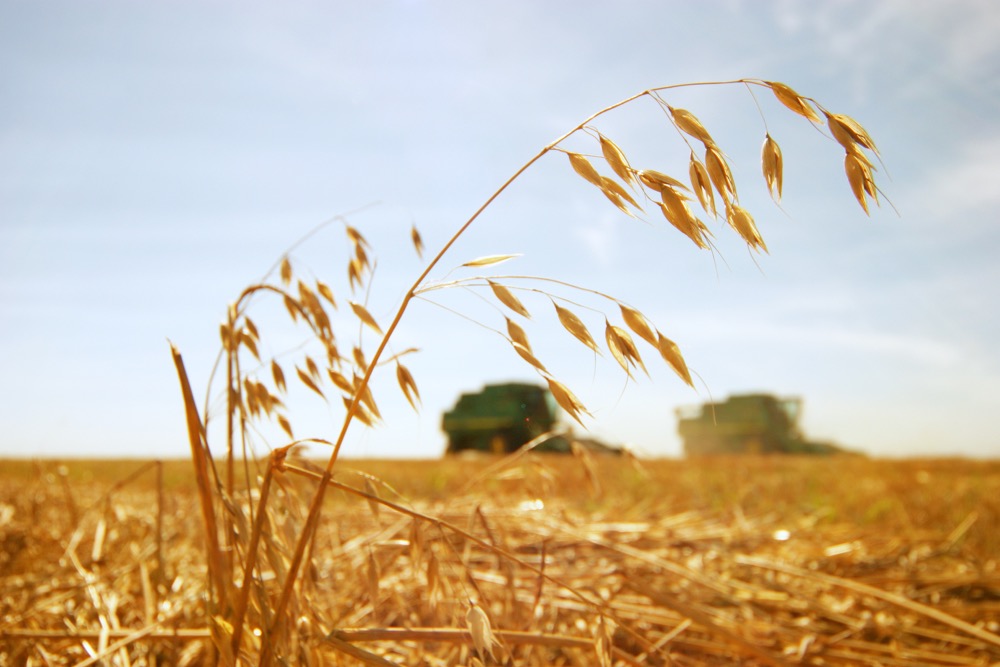
- Maturity Assessment:
- Oats are ready for harvest when the grains have reached their peak maturity.
- Assess the color and firmness of the grains: Fully mature oats will have a golden hue and firm texture.
- Harvesting Methods:
- Hand Harvesting (for smaller gardens or plots):
- Use a sickle or scythe to cut oat stalks close to the ground.
- Provides precision and reduces the risk of damaging neighboring plants.
- Mechanical Harvesting (for larger-scale operations):
- Combine Harvesters:
- Efficiently cut and separate grain from chaff.
- Set the harvesters to appropriate speed and settings to prevent grain loss or damage.
- Combine Harvesters:
- Hand Harvesting (for smaller gardens or plots):
- Drying and Processing:
- After harvesting, leave oat plants in the field to dry.
- Once sufficiently dry, proceed to the next step of processing.
Remember that proper timing and method selection are crucial for maximizing the quality and yield of your oat crop. Happy harvesting! 🌾🌟
After using the Zenport K310 Brush Clearing Sickle, I found it to be a reliable tool for tackling tough vines, weeds, and undergrowth in my garden. The razor-sharp carbon steel blade effortlessly cut through various vegetation, and the 9-inch aluminum handle provided a comfortable grip during prolonged use. Despite its effectiveness, I observed that the handle felt slightly flimsy at times, but overall, the sickle performed admirably, making it a valuable addition to my gardening arsenal.
✔ Durable Construction: Constructed with a 9-inch carbon steel straight edge hooked blade and an aluminum handle, this sickle offers durability and strength to withstand rigorous use in challenging environments.
✔ Comfortable Grip: Equipped with black soft rubber grips, the sickle provides a comfortable and secure grip, reducing hand fatigue during extended use.
✔ Versatility: Suitable for various horticulture applications, the Zenport K310 Brush Clearing Sickle can be used for clearing weeds, undergrowth, small saplings, and even for harvesting fruits, berries, and vegetables.
✔ Sharp Blade: The razor-sharp carbon steel blade ensures powerful cuts on stems, stalks, and branches, enhancing efficiency and productivity.
✔ Lightweight: Weighing only 0.7 pounds, this sickle is lightweight and easy to maneuver, allowing for precise cutting without causing strain on the user.
❌ Single-Handed Use: While the sickle is designed for single-handed use, some users may prefer tools that offer the option for dual-handed operation, providing additional leverage for tougher cutting tasks.
❌ Potential Safety Concerns: Due to its sharp blade, users need to exercise caution to prevent accidental cuts or injuries during use. Proper safety precautions, such as wearing protective gloves, are recommended.
❌ Not Suitable for Thick Vegetation: While effective for clearing weeds and light brush, the Zenport K310 Brush Clearing Sickle may not be suitable for cutting through thick vegetation or woody stems, as it is primarily designed for lighter tasks.
❌ Maintenance Required: Like any cutting tool, the blade of the sickle may require regular sharpening and maintenance to ensure optimal cutting performance over time.
❌ Price: While the Zenport K310 Brush Clearing Sickle offers durability and performance, the initial cost and shipping fees may be relatively high compared to other similar tools on the market, which could be a deterrent for some buyers.
Post-Harvest Handling and Storage Techniques for Oats
Proper post-harvest handling and storage are critical to maintaining the quality of harvested oats. Here are some key points and additional details:
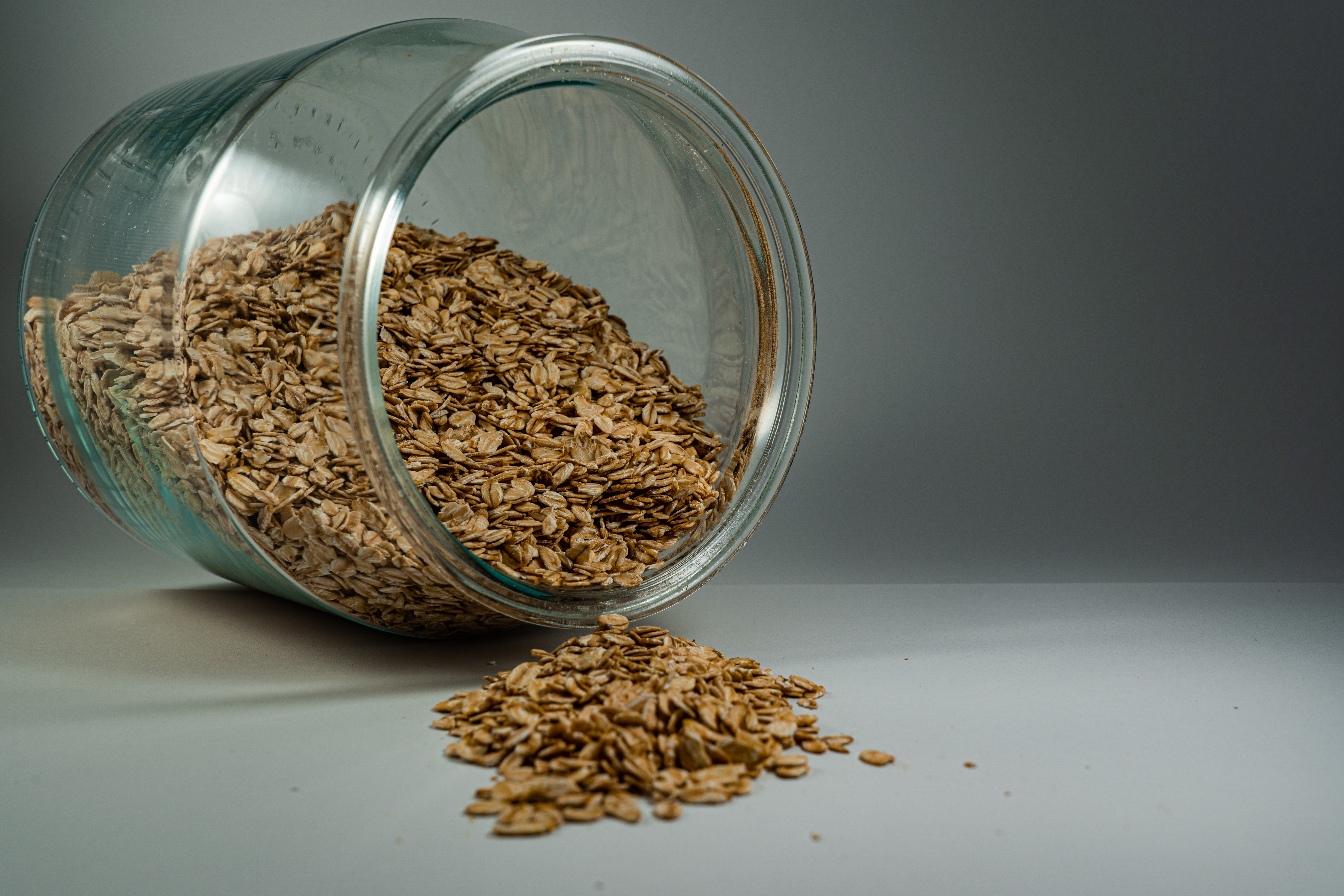
- Cleaning and Drying:
- Foreign Material Removal:
- Remove any foreign materials, such as weed seeds, debris, or other impurities, from the harvested oats.
- Moisture Reduction:
- Oats should be dried thoroughly to reduce moisture content.
- High moisture levels can lead to mold growth, insect infestations, and spoilage.
- Use fans or drying equipment to achieve the desired moisture level (usually around 12-14%).
- Foreign Material Removal:
- Storage Containers and Conditions:
- Appropriate Containers:
- Choose clean, dry, and airtight containers for storing oats.
- Common options include metal bins, plastic bins, or silos.
- Protection from Moisture and Pests:
- Keep oats away from direct sunlight to prevent heat buildup and moisture condensation.
- Protect against pests (rodents, insects) by sealing containers properly.
- Ensure containers are elevated to prevent ground moisture from affecting the oats.
- Temperature Control:
- Store oats in a cool environment to minimize temperature fluctuations.
- Extreme heat can lead to spoilage, while extreme cold can cause condensation.
- Appropriate Containers:
- Labeling and Documentation:
- Proper Labeling:
- Clearly label storage containers with essential information:
- Crop variety
- Harvest date
- Any specific details relevant to the oats (e.g., organic, special treatment)
- Clearly label storage containers with essential information:
- Inventory Management:
- Maintain accurate records of stored oats.
- Track quantities, quality assessments, and any issues observed during storage.
- Proper Labeling:
- Regular Monitoring:
- Visual Inspection:
- Regularly check oats for signs of spoilage, mold, or insect activity.
- Inspect for any changes in color, texture, or odor.
- Temperature and Moisture Monitoring:
- Use temperature probes or moisture meters to monitor conditions inside storage containers.
- Adjust ventilation or drying as needed.
- Prompt Action:
- If any issues are detected (e.g., hot spots, mold growth), take immediate corrective action.
- Isolate affected oats to prevent further contamination.
- Visual Inspection:
Remember that proper post-harvest handling not only ensures oat quality but also contributes to the economic value of the crop. By following these guidelines, oat farmers can deliver high-quality oats to the market and maintain their reputation as reliable suppliers. 🌾🛒
Utilizing Oats in Culinary Delights: Recipes and Ideas
Oats are not only nutritious but also incredibly versatile, making them a popular choice for chefs and home cooks alike. Here are some creative and wholesome ideas for utilizing oats in your cooking:
:max_bytes(150000):strip_icc()/oatmeal-GettyImages-1249206154-2000-0b6e92700da2482f8215650dd9270096.jpg)
- Homemade Granola Bars:
- Mix together the following ingredients:
- Rolled oats
- Variety of nuts (such as almonds, walnuts, or cashews)
- Seeds (such as chia seeds, flaxseeds, or sunflower seeds)
- Dried fruit (raisins, cranberries, or chopped dates)
- Sweetener (honey, maple syrup, or agave nectar)
- Press the mixture into a lined baking dish.
- Refrigerate until firm, then cut into bars.
- These granola bars make a convenient and satisfying snack packed with fiber and wholesome ingredients.
- Mix together the following ingredients:
- Oats as Breadcrumb Substitute:
- Meatballs:
- Instead of breadcrumbs, use ground oats as a binding agent in meatball recipes.
- Oats add texture and flavor while providing a nutritional boost.
- Breaded Dishes:
- Coat chicken, fish, or vegetables with ground oats before baking or frying.
- The oats create a crispy coating and work well for gluten-sensitive diets.
- Meatballs:
- Oatmeal Crust for Savory Pies or Quiches:
- Ingredients:
- Ground oats
- Melted butter
- Instructions:
- Combine ground oats with melted butter.
- Press the mixture into a pie dish to form the crust.
- Bake until golden brown.
- Benefits:
- Gluten-free alternative to traditional pie crusts.
- Adds a nutty flavor to savory dishes.
- Ingredients:
- Stay Tuned:
- Keep an eye out for more creative oat-based recipes!
- We’ll explore different techniques to incorporate this nutritious grain into your daily meals.
Remember, oats are versatile, nutritious, and can enhance both sweet and savory dishes. Happy cooking! 🌾🍽️
The Health Benefits of Incorporating Oats into Your Diet
Oats have long been recognized as a nutritious and wholesome addition to our diets. Incorporating oats into your daily meals can provide a wide range of health benefits. One of the standout features of oats is their high fiber content. A single cup of cooked oats contains about 4 grams of dietary fiber, which is essential for a healthy digestive system.

Here are some key points about the health benefits of oats and creative ways to incorporate them into your meals:
- Cholesterol Reduction:
- Beta-glucan, a soluble fiber in oats, has been shown to reduce cholesterol levels in the blood.
- Regular oat consumption promotes heart health.
- Blood Sugar Control:
- Oats help improve blood sugar control.
- Ideal for individuals with diabetes or those managing blood sugar levels.
- Nutrient-Rich Profile:
- Manganese:
- Essential for metabolism and bone health.
- Phosphorus, Magnesium, and Iron:
- Vital for various bodily functions.
- Antioxidants (Avenanthramides):
- Anti-inflammatory and anti-cancer properties.
- Protect cells from damage and reduce chronic disease risk.
- Manganese:
- Creative Culinary Uses:
- Homemade Granola Bars:
- Mix oats with nuts, seeds, dried fruit, and sweetener.
- Press into bars for a wholesome snack.
- Oats as Breadcrumb Substitute:
- Use ground oats in meatballs or breaded dishes.
- Adds texture, flavor, and nutrition.
- Oatmeal Crust for Savory Pies or Quiches:
- Combine ground oats with melted butter.
- Press into a pie dish and bake.
- Gluten-free and nutty-flavored crust.
- Homemade Granola Bars:
Remember to consult with professionals for personalized dietary advice. Stay tuned for more oat-related tips and recipes! 🌾🍽️
Oats as a Sustainable and Environmentally Friendly Crop
Oats are not only a nutritious grain but also a sustainable and environmentally friendly crop. Their cultivation and production have minimal negative impacts on the environment, making them an attractive choice for farmers and consumers alike.
- One of the reasons oats are considered sustainable is their efficient use of resources.
- Compared to other cereal crops, oats require less water and fertilizer, making them a more environmentally friendly option.
- Their deep root system also helps prevent soil erosion, conserving precious topsoil and maintaining soil health.
- Additionally, oats are resilient and adaptable to a range of climates and soil conditions.
- They can withstand colder temperatures and grow in poorer quality soils, reducing the need for excessive irrigation or the use of chemical inputs.
- This versatility makes oats a valuable crop for farmers in various regions, contributing to the overall sustainability of agricultural practices.
Exploring the Economic Opportunities of Growing Oats
Growing oats can offer numerous economic opportunities for farmers and entrepreneurs alike. The demand for oats and oat products has been steadily increasing in recent years due to their recognized health benefits and versatile culinary uses. This growing market presents a valuable opportunity for individuals involved in oat cultivation and production.
- Economic Opportunities of Growing Oats:
- High Yield and Profitability:
- Oat crops have the potential to produce abundant harvests, offering farmers a reliable income source.
- Proper planning and management can help optimize yield and maximize profits in the oat cultivation industry.
- Versatility in Climate and Soil Conditions:
- Oats can be cultivated in diverse climates and soil types, making them a viable option for farmers in various regions.
- Increasing Demand for Oats and Oat Products:
- Recognized health benefits and versatile culinary uses have led to a steady rise in demand for oats and oat-based products.
- Oats are popular for their high fiber content, low glycemic index, and suitability in breakfast cereals, granola bars, and plant-based milk alternatives.
- Entrepreneurial Opportunities:
- The growing market for oat-based food products presents opportunities for entrepreneurs to capitalize on consumer trends.
- Entrepreneurs can incorporate oats into their product offerings, such as developing oat-based snacks or creating innovative oat recipes.
By considering these economic factors and leveraging the increasing demand for oats and oat products, both farmers and entrepreneurs can benefit from the lucrative opportunities presented by the oat industry.
Watch video for more information:
FAQ
What are some common oat varieties used in cultivation?
Some common oat varieties used in cultivation include the Prairie, Montezuma, and Hayden.
How long have oats been cultivated and why are they important in agriculture?
Oats have been cultivated for thousands of years and they are important in agriculture due to their versatility as a food source for both humans and animals, as well as their ability to improve soil health.
Are there different types of whole-grain oat products available?
Yes, there are various types of whole-grain oat products available, including rolled oats, steel-cut oats, oat flour, and oat bran.
What factors should I consider when selecting oats for optimal nutrition?
When selecting oats for optimal nutrition, consider factors such as the oat’s processing method, its fiber content, and the absence of added sugars or artificial additives.
Can you explain the process of sowing oat seeds and promoting growth?
The process of sowing oat seeds involves preparing the soil, planting the seeds at the right depth and spacing, and providing adequate water and sunlight for growth. Promoting growth also involves regular monitoring and addressing nutrient deficiencies or pests.
What are some essential factors for successfully growing oats?
Some essential factors for successfully growing oats include selecting the right oat variety for your region, ensuring proper soil fertility, managing weeds effectively, and providing appropriate irrigation and sunlight.
What are the soil, water, and sunlight requirements for nurturing oat crops?
Oat crops thrive in well-drained soil with a pH range of 6.0 to 7.5. They require adequate water, about 1-1.5 inches per week, and prefer full sunlight exposure for at least 6 hours a day.
How can I effectively manage pests and diseases in oat plants?
Effective pest and disease management in oat plants can be achieved through practices like crop rotation, regular scouting for signs of pests or diseases, and timely application of organic or chemical treatments when necessary.
Why is proper weed control important in oat farming?
Proper weed control is important in oat farming because weeds compete with oats for resources like sunlight, water, and nutrients. Uncontrolled weeds can reduce crop yield and quality.
When is the best time to harvest oats and how should it be done?
The best time to harvest oats is when they reach maturity and the moisture content is around 15-20%. Harvesting can be done by cutting the stalks with a sickle or using a combine harvester for larger-scale operations.
What are some post-harvest handling and storage techniques for oats?
Post-harvest handling and storage techniques for oats include cleaning and drying the harvested oats to reduce moisture content, storing them in dry and well-ventilated areas, and protecting them from pests and rodents.
Can you provide some culinary ideas and recipes that utilize oats?
Yes, some culinary ideas and recipes that utilize oats include oatmeal cookies, overnight oats, oat-based granola bars, and oatmeal pancakes.
What are the health benefits of incorporating oats into your diet?
Incorporating oats into your diet can provide numerous health benefits, such as improved heart health, better digestion, reduced cholesterol levels, and increased satiety.
How are oats considered a sustainable and environmentally friendly crop?
Oats are considered a sustainable and environmentally friendly crop because they require fewer pesticides and fertilizers compared to other crops, their cultivation enhances soil health, and they have a lower carbon footprint.
Are there economic opportunities associated with growing oats?
Yes, growing oats can provide economic opportunities such as selling oats as a commodity, supplying oats to the food industry, and even starting an oat-based products business.

Studied Agricultural Engineering-Plant Protection at University of California, Davis.
Head of Content writing team at Southelmontehydroponics.com

